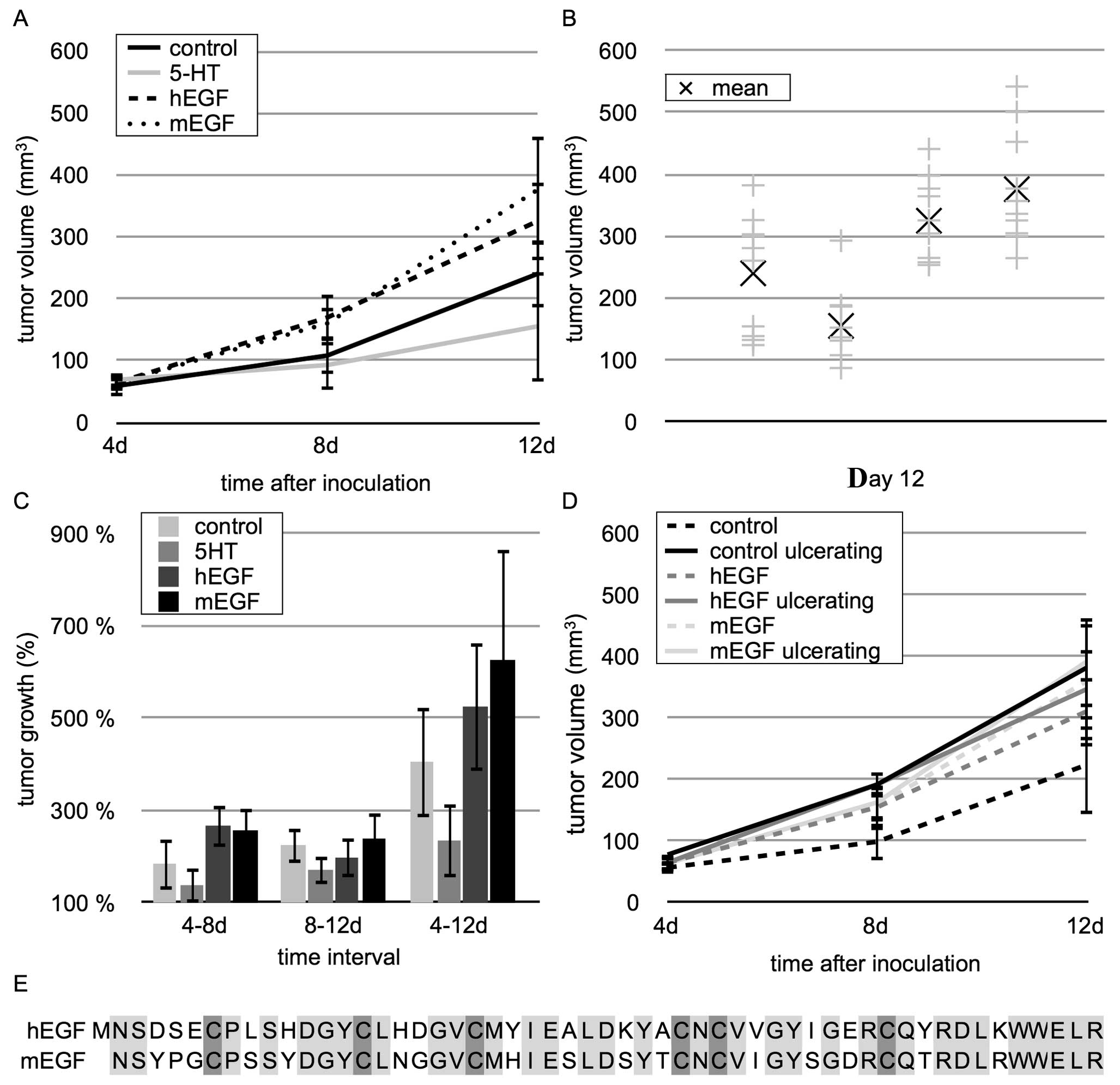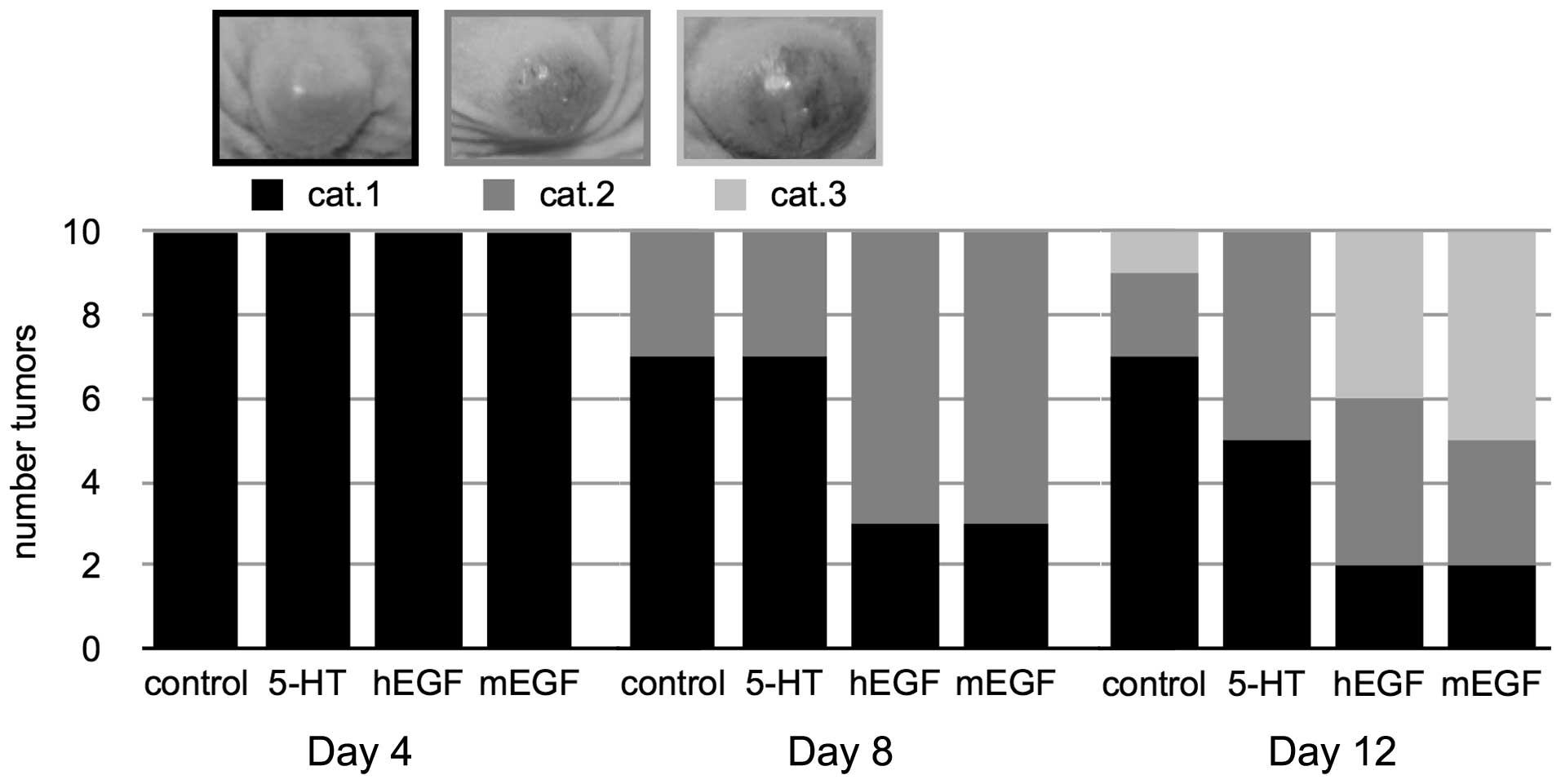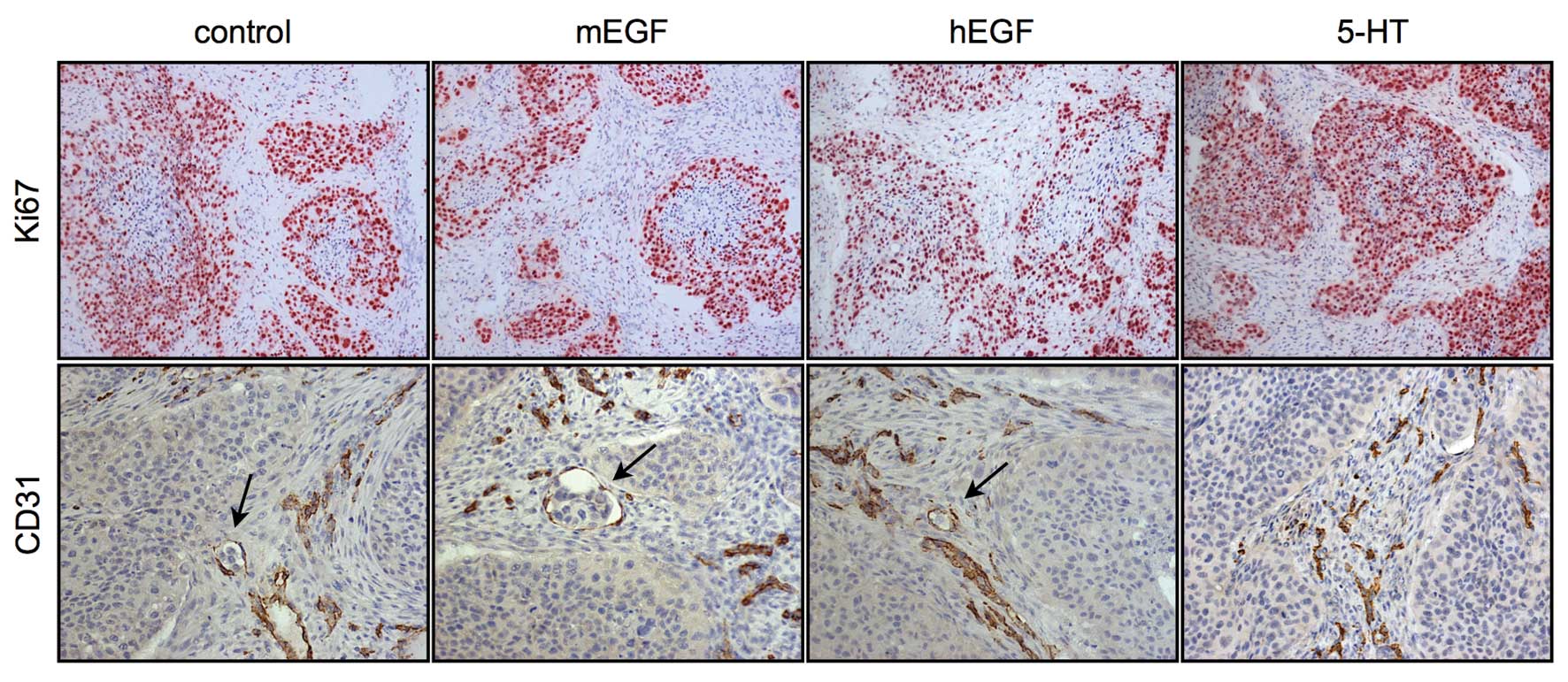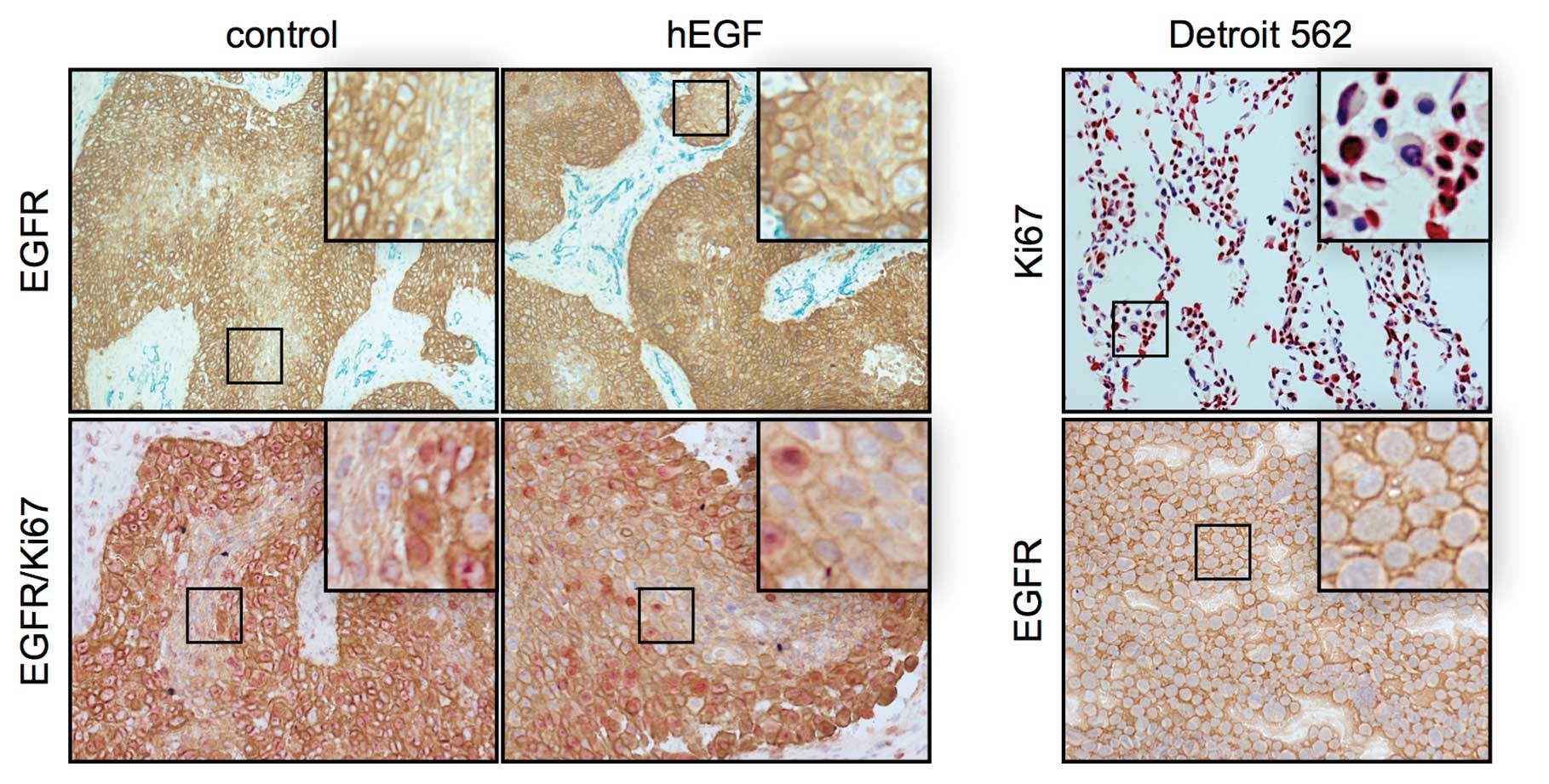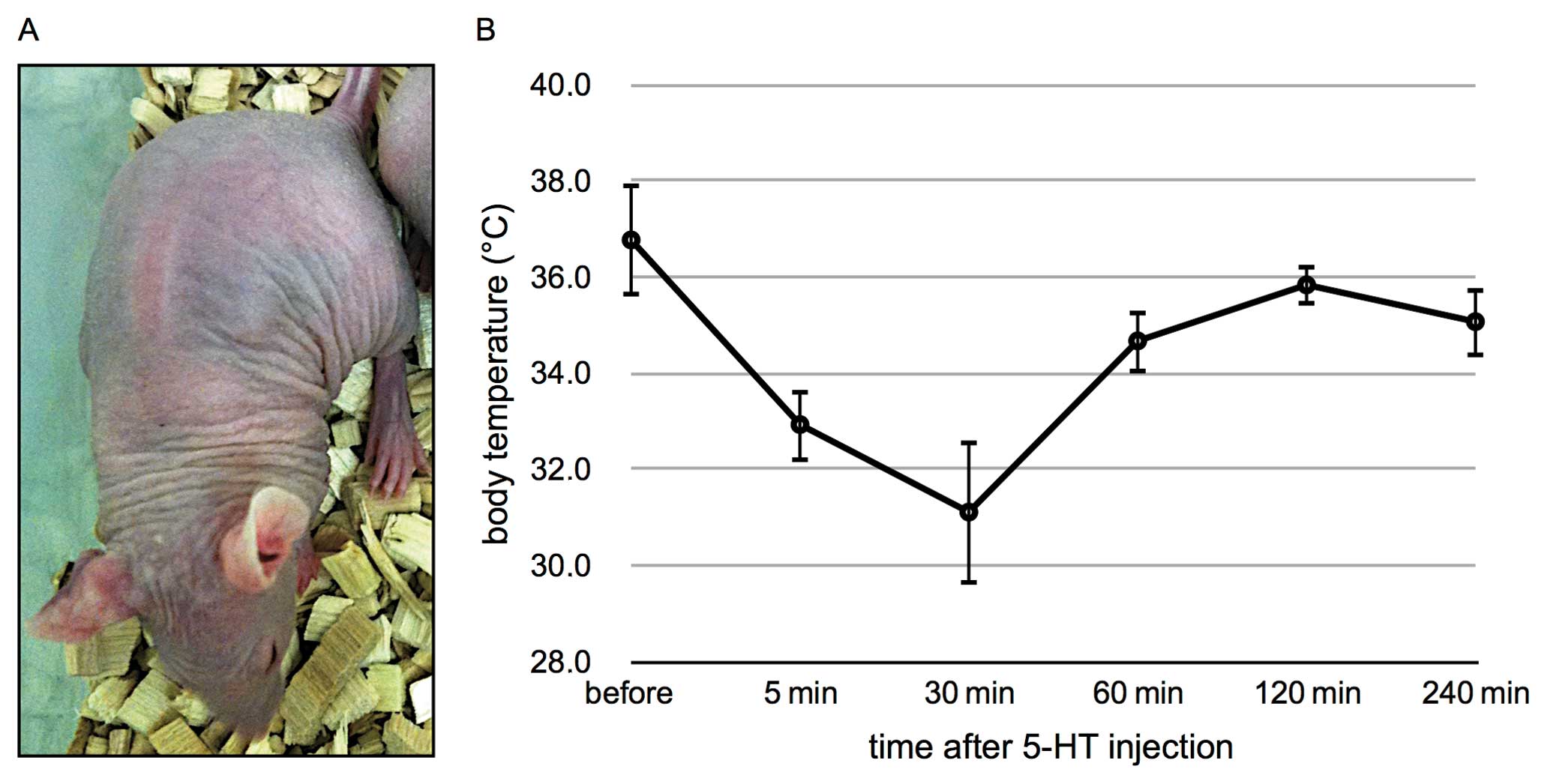The role of recombinant epidermal growth factor and serotonin in the stimulation of tumor growth in a SCCHN xenograft model
- Authors:
- Published online on: July 6, 2012 https://doi.org/10.3892/or.2012.1903
- Pages: 785-790
-
Copyright: © Geissler et al. This is an open access article distributed under the terms of Creative Commons Attribution License [CC BY_NC 3.0].
Metrics: Total
Views: 0 (Spandidos Publications: | PMC Statistics: )
Total PDF Downloads: 0 (Spandidos Publications: | PMC Statistics: )
Abstract
One challenge of squamous cell carcinoma of the head and neck (SCCHN) chemotherapy is a small percentage of tumor cells that arrest in the G0 phase of the cell cycle and are thus not affected by chemotherapy. This could be one reason for tumor recurrence at a later date. The recruitment of these G0-arresting cells into the active cell cycle and thus, proliferation, may increase the efficacy of chemotherapeutic agents. The aim of this study was to investigate whether stimulation with recombinant epidermal growth factor (EGF) or serotonin leads to an increased tumor cell proliferation in xenografts. Detroit 562 cells were injected into NMRI-Foxn1nu mice. Treatment was performed with 15 µg murine or human EGF, or 200 µg serotonin. The control mice were treated with Lactated Ringer's solution (5 mice/group). Tumor size was measured on days 4, 8 and 12 after tumor cell injection. The EGF stimulated mice showed a significantly higher tumor growth compared to the serotonin-stimulated mice and the untreated controls. In the present study, we show that it is possible to stimulate tumor cells in xenografts by EGF and thus, enhance cell proliferation, resulting in a higher tumor growth compared to the untreated control group. In our future investigations, we plan to include a higher number of mice, an adjustment of the EGF dosage and cell subanalysis, considering the heterogeneity of SCCHN tumors.



